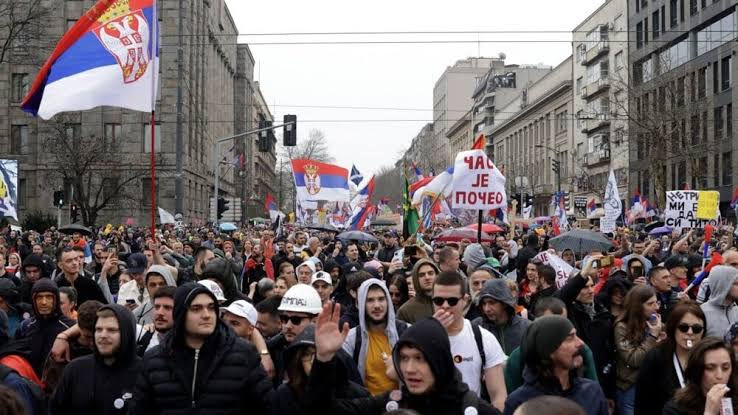Today's Brief 20/03/2025
- Smriti IASxp
- Mar 20
- 3 min read
IE Analysis:https://youtu.be/OpXZqawjvug?si=oEd7z3KO0_usaLbD
JS Analysis;https://youtu.be/QV3Hf6HxJ2I?si=36-uv-DkVhjBGYCE
1 . Sonic weapons,
(General Studies-III (250 marks)Technology, Economic Development, Biodiversity, Environment, Security, and Disaster Management)
also known as acoustic weapons, utilize sound waves to generate effects ranging from discomfort to incapacitation.

These devices can emit sounds at both audible and inaudible frequencies, creating intense sound waves that can cause disorientation, nausea, pain, and, in extreme cases, physical injury. Devices like the Long Range Acoustic Device (LRAD) project focused beams of sound over considerable distances.
The effects of these weapons vary significantly depending on the device's power and the duration of exposure. The use of sonic weapons is highly controversial due to concerns about potential abuse and long-term health effects.
Debates surrounding their legality in various situations are also prevalent, and claims exist that certain sonic devices are banned.

In the context of the Serbian protests, controversy arose from allegations that security forces used a sonic weapon to disperse demonstrators, which officials have denied, highlighting the ongoing debate and concern surrounding these technologies.
The Serbian protests of 2024-2025 were ignited by the tragic collapse of a railway station canopy in Novi Sad, an event that resulted in significant casualties and sparked widespread public outrage.
This incident served as a catalyst, focusing public anger on perceived government negligence and corruption.
Beyond the immediate tragedy, these demonstrations reflect deeper-seated frustrations with the Serbian government, including concerns over a lack of transparency and pervasive corruption.
Student-led movements have also joined the protests, demanding greater democratic freedoms.
What began as localized protests in Novi Sad quickly escalated into a nationwide movement, with demonstrations spreading to numerous cities and towns throughout Serbia, highlighting a growing discontent with the current political climate.
Serbia, a landlocked country in Southeast Europe, is located at the crossroads of the Balkans and the Pannonian Plain. Its capital, Belgrade, is one of the oldest cities in Europe and serves as the country's political, economic, and cultural hub.
Serbia has a rich history, having been part of various empires, including the Roman, Byzantine, and Ottoman Empires, before becoming a key republic within Yugoslavia in the 20th century.

Following the breakup of Yugoslavia in the 1990s, Serbia emerged as an independent nation in 2006. The country is known for its diverse cultural heritage, Orthodox Christian traditions, and vibrant festivals such as EXIT, held in Novi Sad. Serbia's economy is driven by industries like agriculture, automotive manufacturing, and information technology.
2 . Navroz, also known as Nowruz, is a traditional festival marking the Persian New Year and the arrival of spring, celebrated on the vernal equinox (March 20th or 21st). Rooted in Zoroastrianism, it symbolizes renewal, hope, and the triumph of good over evil. Celebrated in countries like Iran, Afghanistan, and parts of Central and South Asia,
Navroz involves rituals such as setting up the Haft-Seen table with seven symbolic items, spring cleaning, family gatherings, and feasting on special dishes.
Recognized by the United Nations as International Nowruz Day, it reflects cultural heritage, unity, and the rejuvenation of nature.
3 .The Khelo India Para Games, a significant sporting event for para-athletes in India,
(GS Paper II: Governance, Constitution, Polity, Social Justice and International Relations)
is scheduled to commence in New Delhi this afternoon.
This second edition of the games, part of the larger Khelo India initiative, will take place from March 20th to 27th, 2025, across three prominent venues: the Indira Gandhi Stadium, the Jawaharlal Nehru Stadium, and the Dr. Karni Singh Shooting Range.
Athletes will compete in six para-sports disciplines, showcasing their talent and determination in
Para Archery,
Para Athletics,
Para Badminton,
Para Powerlifting,
Para Shooting, and
Para Table Tennis.

The games aim to promote inclusivity and provide a platform for para-athletes to excel, fostering a spirit of sportsmanship and national pride.
4 .Cancer Day care:
(General Studies-III (250 marks)Technology, Economic Development, Biodiversity, Environment, Security, and Disaster Management)
(GS Paper II: Governance, Constitution, Polity, Social Justice and International Relations)
India is intensifying its fight against cancer through a multifaceted approach, as highlighted by the Ministry of Health and Family Welfare.
With cancer cases rising, the government is prioritizing prevention, early detection, and advanced treatment.
The Union Budget 2025-26 allocates significant funds, including the establishment of Day Care Cancer Centres in district hospitals and customs duty exemptions on essential cancer drugs.
Key initiatives like the National Programme for Prevention and Control of Cancer, Diabetes, Cardiovascular Diseases and Stroke (NPCDCS), Ayushman Bharat Yojana, and the Health Minister’s Cancer Patient Fund are strengthening healthcare infrastructure and providing financial assistance.
Advancements in research, such as
India's first indigenous CAR-T cell therapy, NexCAR19, and international collaborations like the Quad Cancer Moonshot,
demonstrate a commitment to innovation.
Awareness campaigns and the expansion of cancer treatment facilities further bolster efforts to create a cancer-free India.

Comments